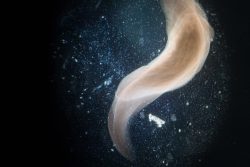
Researchers at the Stowers Institute for Medical Research have discovered the one cell that has the capability of regenerating an entire organism. Until recently scientists lacked the tools that could target and track this cell which enables a variety of creatures such as the planarian flatworm to perform amazing feats such as regrowing a severed head.
By pioneering a new technique that combines single cell analysis, flow cytometry, imaging and genomics, the researchers have isolated this regenerative cell which is a subtype of the earlier studied adult pluripotent stem cell before it performed this remarkable act. Now that this stem cell has been isolated prospectively the findings prove that this is no longer an abstraction. There really is a cellular entity that can restore to animals and humans the ability to regenerate any part of the body.
All multicellular organisms are built from a single cell which divides multiple times. Each of the cells has the exact same twisted strands of DNA and is considered pluripotent which means it can give rise to all cell type possibilities in the body. However somewhere along the way the starter cells which are known as embryonic stem cells find a different fate and become heart cells, muscle cells, skin cells and other types of cells. In humans no known pluripotent stem cells will remain after birth, however in planarians they remain into adulthood. Here they become known as adult pluripotent stem cells or neoblasts. It is believed these neoblasts contain the secret to regeneration.
It is only in the last 20 years that scientists have been able to characterize this powerful cell population using molecular techniques and functional assays. The work showed that this seemingly homogenous cell population was a conglomeration of different subtypes all with different patterns and properties of gene expression. Previous to the current study, scientists would have to transplant over a hundred single cells into the same amount of worms to find the one that is truly pluripotent and has the ability to regenerate the organism. Not only would that be a lot of work, but to define it molecularly by identifying the genes that cell is expressing they would have to destroy the cell for processing which meant not being able to keep the cell alive to track its regeneration.
The team began searching for a distinguishing characteristic that would identify this elusive cell ahead of time. A stem cell marker known as piwi 1 is able to distinguish neoblasts so the team decided to begin there. They first separated the cells that expressed this marker from the ones that did not. They then noticed the cells could be separated into two groups…one that expressed lower levels of piwi 1 and ones that expressed high levels of piwi 1. They found that the ones that were piwi 1 high were the ones that fit the molecular definition of neoblasts and so the other ones were discarded.
This type of gene expression and protein levels had never been conducted in planarians. Previously researchers believed all cells which expressed the piwi 1 were true neoblasts and it wasn’t relevant how much of the marker they expressed. The team showed it did make a difference.
The researchers selected 8,000+ of the high piwi 1 cells and proceeded to analyze their gene expression patterns. To their surprise, the cells fell into 12 different subgroups. Through elimination they excluded any subgroups that had genetic signatures indicating they were cells destined for a particular fate such as skin or muscle cells. That left them with two subgroups that could still be pluripotent. These two groups were called Nb1 and Nb2.
The cells in NB2 group expressed a gene coding for a member of the tetraspanin protein family which is a group of evolutionary ancient and also very poorly understood proteins that sit on the cell surface. They made an antibody that could latch onto this protein and pull the cells that carried it out of a mixture of other neoblasts. They then transplanted the single purified cell into a planarian which had been subjected to lethal levels of radiation. The cells not only repopulated and rescued the planarian, but they did so 14 times more consistently than cells which had been purified by older methods.
The fact that the marker the team discovered is expressed not only in planarians but also in humans, opens the door to new experiments never thought possible. It would make sense that these principles could be broadly applicable to any organism that has ever relied on stems cells to become what they are today. That is everybody!
To view the original scientific study click here: Prospectively Isolated Tetraspanin Neoblasts Are Adult Pluripotent Stem Cells Underlying Planaria Regeneration





